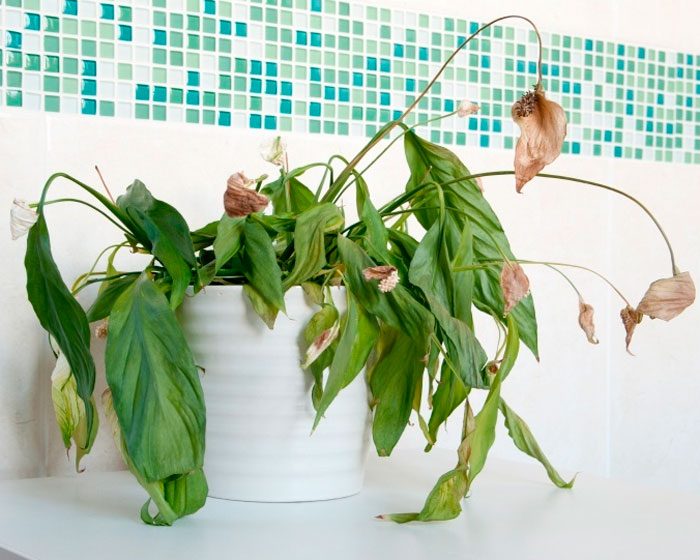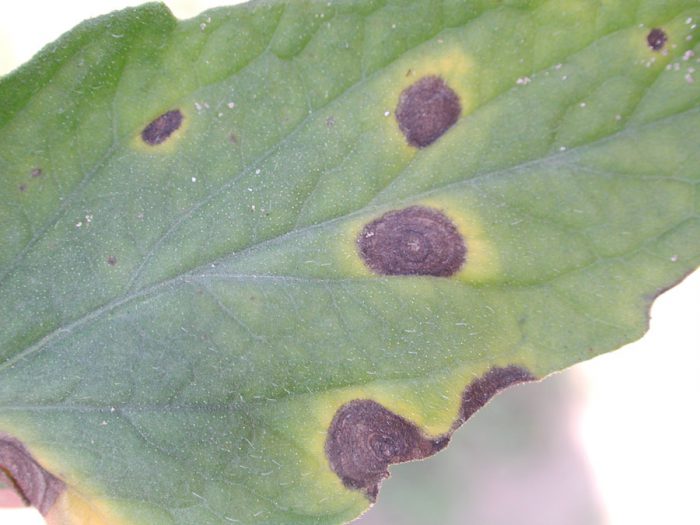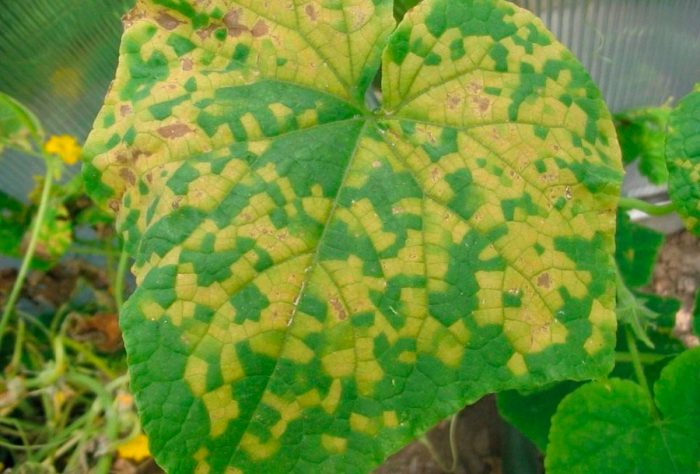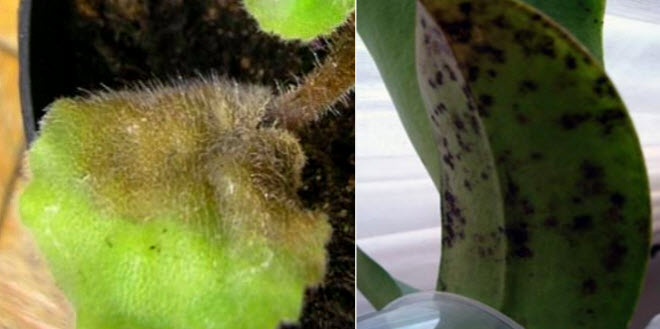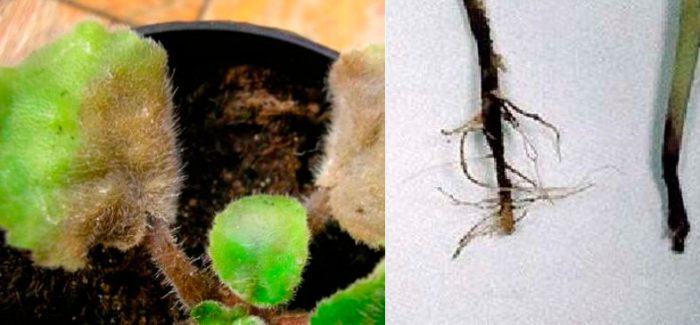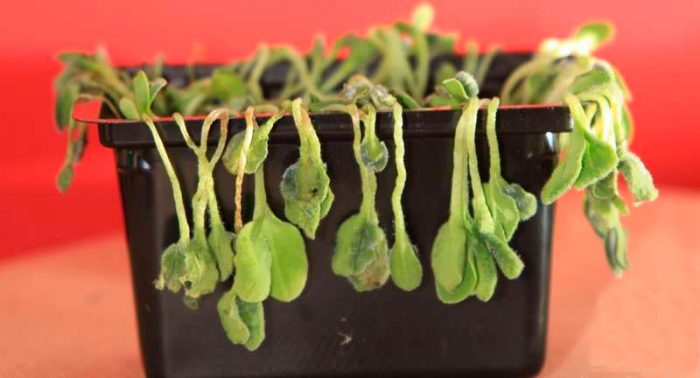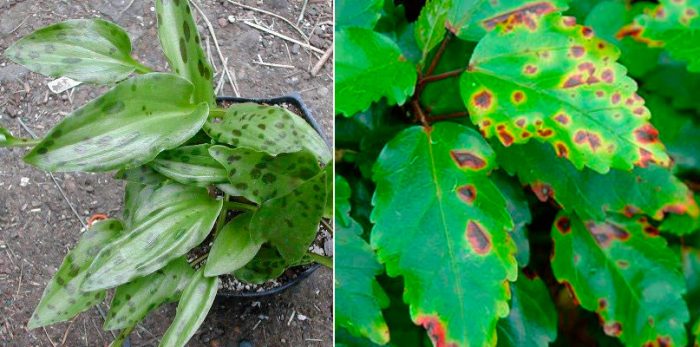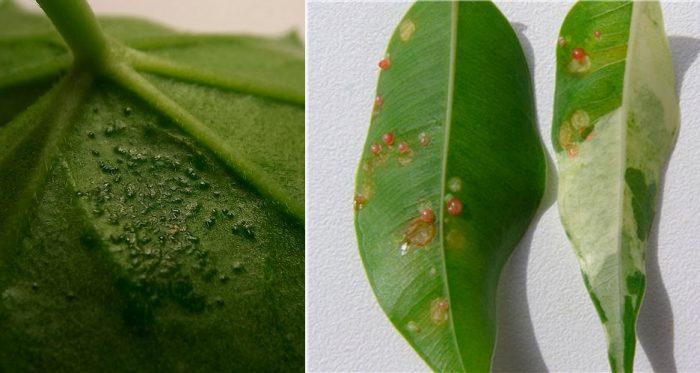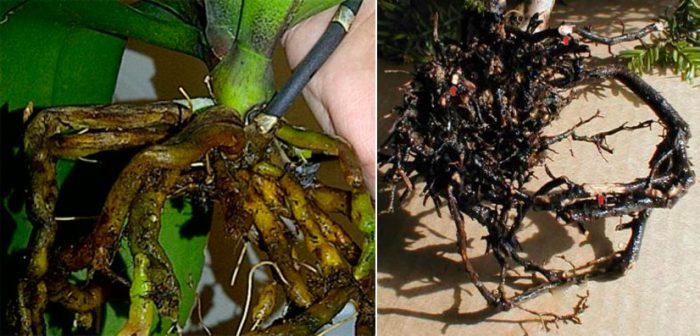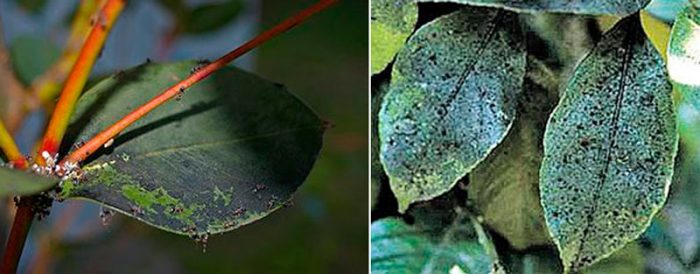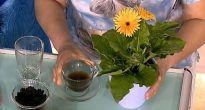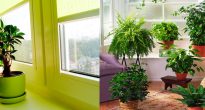Indoor plants are susceptible to various diseases. These diseases are the result of exposure to harsh environmental conditions, as well as the result of inadequate care. These can be: excessive humidity or dry air, too high or too low temperature, lack of fertilizing or excess, the quality of the earthen mixture does not correspond to the required one, the capacity is not suitable, etc. Most of the diseases are not spread to other plants. Sometimes the problem is related to the fact that retail outlets sell greenhouse plants, which are sometimes difficult to adapt to the conditions of modern apartments, as a result of which they may develop poorly or shed their leaves, indicating that the conditions for this plant are not entirely suitable. If such a precedent takes place, then the plant must be removed from the pot and the roots must be examined. If the root system is damaged, the plant will have to say goodbye, otherwise, it must be transplanted and experimentally established what is the reason. Perhaps this plant has little light or lacks nutrients. The object can be fed and transferred to a brighter place. If the plant before this stood in a lighted place, then it should be moved to partial shade or shade.
In any case, it is necessary to check how effective drainage is, and if there is any at all. In its absence, you need to transplant the plant according to all the rules. Many indoor plants do not tolerate or do not tolerate temperature fluctuations, as well as the presence of drafts. This is an important factor that should be considered when keeping indoor ornamental plants or flowers.
Overdried air, especially in winter, when the heating season begins, can cause significant damage to plants. It can cause thrips and spider mites to appear if preventive measures are not taken.
Watering plants is carried out with water at room temperature and only soft (rain or thawed) and only settled.
Content
Common diseases of indoor plants
Fungi that cause leaf spots
As a rule, plants that are not well cared for are affected. Basically, it suffers from: camellia, anthurium, selected types of palms and orchids.
Such defeats characterized by the appearance of spots on the leaves, and not large. If no action is taken, these spots grow and the leaves begin to die off.
Ways to fight are that the affected plants are not sprayed with water, and the affected leaves are removed.
Anthracnose
This common disease can develop in warm and humid conditions, which can be relevant when growing plants in greenhouses.
Symptoms appear as the appearance on the leaves of plants such as palms and ficuses, dark brown streaks.
Control methods with such diseases is reduced to the systemic treatment of plants with fungicides and the destruction of damaged leaves. In addition, watering and spraying of plants stops for several weeks.
Powdery mildew
This type of disease appears in dry and warm air. At the same time, different types of fungi can be found on various types of plants. In other words, fungi that appear on begonias cannot appear on the rose. Powdery mildew affects plants such as hydrangea, cretonne, begonia, kalanchoe, cyclamen, chrysanthemum, roses, uzamberskie violets.
Emergence this disease characterized by the presence of a white, light-erasing plaque. This plaque can be found on leaves, buds, young shoots and flowers. After that, the affected areas begin to turn black and die off. The fungus can quickly spread to other plants of the same species.
Control methods consist in isolating a diseased plant and destroying the affected areas, after which the plant is treated with appropriate chemicals.
Downy mildew
Grows well in humid but cold environments. May affect certain plant species such as primrose, calceolaria and gloxinia.
Symptoms the appearance of a non-washed off white bloom on the lower part of the leaves serves. To prevent the onset of this disease, you should not overmoisten the soil, as well as the air around the plant. Plant disease should not be sprayed with water. Since the fungus lives inside the leaf tissue, it makes no sense to spray the plant with various preparations.
Blackleg
This disease manifests itself in stem cuttings of many plants, but pelargonium suffers most of all. It can appear as a result of high moisture content or excessive soil compaction, which prevents the free passage of moisture.
Symptom the appearance of such a disease is the blackening of the base of the cutting, which indicates its defeat by the fungus Botrytis.
The affected stalk should be immediately removed and a new one should be planted, while it is necessary to check that the ground or substrate is not so wet, and the stalk should not be covered with film or glass.
Gray rot
The fungus of gray rot can appear in conditions of damp and warm air, as a result of improper plant placement, since it weakens at the same time. Plants with thin and soft leaves are most susceptible to this disease.
It could be a chrysanthemum gloxinia, cyclamen and others.
Emergence This disease can be detected by the appearance of gray mold on the stems and leaves, which can rise into the air when strong air currents appear. The consequence of such a lesion may be darkening and death of the affected areas.
Control methods with this disease, you need to carefully and carefully remove the affected area. After that, the plant is not sprayed and watered less often, and the room is regularly ventilated.
Rust
This disease appears on plants such as the Rose, fuchsia, pelargonium etc.
Symptoms Rust can be identified by the appearance of brown or orange, wart-like pustules located on the top of the leaf. They can be easily pry off with a fingernail, and light spots appear in their place.
If a plant is damaged by rust, it is better to destroy the entire plant, not just the affected parts. If the plant is very rare and expensive, it may be necessary to treat the plant with a systemic fungicide.
Stem rot
The appearance of such a fungus contributes to its rapid spread, which leads to the death of the plant. After that, the whole plant is developed, along with the pot and soil.
Emergence this disease can be determined by the softening of the stems or the entire crown, after which decay occurs. In this case, the entire plant can be affected.
Control methods very conditional and it is unlikely that it will be possible to save the plant, even at the initial stage of the disease.
Preventive measures are to keep the plant in normal conditions, while trying not to "flood" the plant, maintain the appropriate temperature regime and regularly ventilate the room.
Lodging of seedlings
The basis of such a disease are fungi that affect the base of the stems, as well as the roots of seedlings.
Symptoms such a disease are changes in the structure of the stems in the region of the root system, as a result of which they begin to rot, after which the young plants die.
Prevention methods such a disease lies in the plane of compliance with the golden rules for sowing seeds: the seeds are planted in sterile soil, not very thickly and with optimal watering. As soon as the disease began to manifest itself, the affected young plants are immediately removed, and the rest are moved to a cooler place, where the room is regularly ventilated.
Leaf spot
The cause of the manifestation of this disease can be both fungi and bacteria.
It appears it is the appearance of wet brown spots on the leaves of dieffenbachia, citrus, dracaena and other plants. If you do not take any measures, then these spots will grow and merge into one whole spot, as a result of which the entire leaf will be affected.
Control methods include fungicide treatment, as well as burning the affected leaves, after which the plant is stopped spraying and watered for several weeks.
Dropsy
This disease is a consequence of waterlogged soil in low light conditions.
It appears this reaction is the appearance of dense cork growths on the back of the leaves.
It is better to remove diseased leaves, since they will not take their original appearance, and the plant itself should be moved to a more illuminated place with a decrease in watering activity. In this case, new leaves will grow, absolutely healthy.
Root rot
Succulents, palms, begonias are not resistant to such a disease, Saintpaulia and etc.
Symptoms appear in the form of yellowness appearing on the leaves or stems, after which the plant begins to wilt. Then the affected areas darken, as a result of which the plant dies. This disease appears as a result of fungal root disease, which develops as a result of severe waterlogging of the soil.
Fight the root rot is possible only at an early stage of its detection and only by a surgical method, which consists in the fact that the plant is released from the pot and the roots are washed, after which, with the help of a sharp knife, all affected roots are cut out. After that, the plant is transplanted into a new pot with fresh substrate. The pot with the plant must be placed in a lighted place, but not in direct sunlight. As soon as new shoots appear, the plant needs to be watered, but not in large doses, so as not to overmoisten.
Black
A black appearance of the fungus can appear in places where aphids, whitefly or mealybug leave behind a sweetish discharge.
Symptoms appear in the form of not a beautiful plaque, which does not pose a danger to the plant itself, but closes the surface of the leaves from the passage of sunlight, which greatly oppresses the plant.
Fight with a black bloom consists in mechanical removal of it with a wet cloth, and rinsing the places with fresh warm water. To prevent this from happening, it is necessary to timely treat plants from pests.
Plant viral diseases
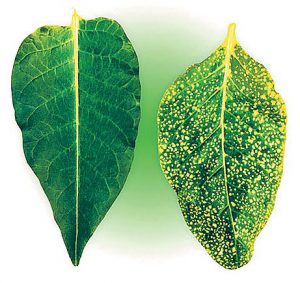

Manifestation of symptoms may be different, but in general, infections also slow down the development of the plant or the plant does not develop correctly: the stems are bent, and growth is inhibited. Dots or stripes of different colors may appear on the leaves and stems of the plant.
Control methods with such a disease does not exist, since the cause is not known, therefore, it will be better if the plant is simply thrown away.
Pests of indoor plants and the fight against them - Video
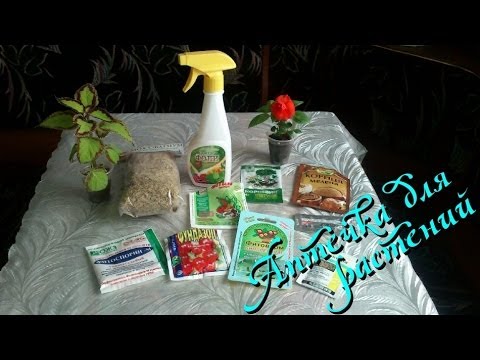

Watch this video on YouTube

